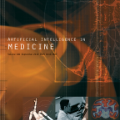Logic-based approaches to AI have the advantage that their behavior can in principle be explained to a user. If, for instance, a Description Logic reasoner derives a consequence that triggers some action of the overall system, then one can explain such an entailment by presenting a proof of the consequence in an appropriate calculus. How comprehensible such a proof is depends not only on the employed calculus, but also on the properties of the particular proof, such as its overall size, its depth, the complexity of the employed sentences and proof steps, etc. For this reason, we want to determine the complexity of generating proofs that are below a certain threshold w.r.t. a given measure of proof quality. Rather than investigating this problem for a fixed proof calculus and a fixed measure, we aim for general results that hold for wide classes of calculi and measures. In previous work, we first restricted the attention to a setting where proof size is used to measure the quality of a proof. We then extended the approach to a more general setting, but important measures such as proof depth were not covered. In the present paper, we provide results for a class of measures called recursive, which yields lower complexities and also encompasses proof depth. In addition, we close some gaps left open in our previous work, thus providing a comprehensive picture of the complexity landscape.
翻译:以逻辑为基础的大赦国际方法的优点是,它们的行为原则上可以向用户解释。例如,如果描述逻辑解释器产生一个触发整个系统某些行动的后果,那么人们就可以通过在适当的微积分中提出有关后果的证据来解释这种必然结果。这种证据的可理解性不仅取决于使用的微积分,而且取决于特定证据的特性,例如证据的总体大小、深度、采用的判决和证据步骤的复杂性等。为此原因,我们希望确定产生低于某种临界值的证据的复杂性,而这种证据的质量则低于某种临界值。我们不是为固定的证据微积分和固定计量来调查这一问题,而是力求取得具有广泛计算和计量类别的一般性结果。在以往的工作中,我们首先将注意力限制在使用证据大小来衡量证据质量的设置上。我们随后将方法扩大到更一般性的设置,但重要措施,例如证据深度没有被涵盖。在本文件中,我们提供了某种精确的复杂程度,因此我们提供了一种精确度,因此要求某些复杂程度的尺度。我们提供了一种精确度,我们提供了一种精确的尺度。




